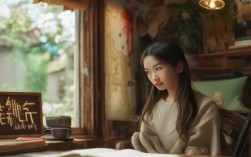在雅思口语考试中,谈及“art style”(艺术风格)是一个展现词汇量、文化理解能力和逻辑思维的高频话题,无论是描述个人偏好、分析艺术流派,还是探讨艺术与社会的关系,考生都需要具备清晰的结构和丰富的表达,本文将从艺术风格的核心要素、常见流派、雅思口语高频考点及答题技巧三个方面展开,帮助考生系统掌握这一话题。

艺术风格的核心要素
艺术风格是艺术家在创作中形成的独特表现形式,通常包含以下几个核心要素,理解这些要素有助于考生在口语中精准描述和分析艺术作品。
-
色彩运用
色彩是艺术风格中最直观的元素之一,印象派画家莫奈擅长用光影变化的色彩表现自然瞬间,而野兽派马蒂斯则大胆使用高饱和度色彩传递情感,考生可积累相关词汇,如“vibrant colors”(鲜艳色彩)、“muted tones”(柔和色调)、“monochromatic scheme”(单色配色)等。 -
线条与笔触
线条的流畅度、粗细变化及笔触的力度能反映艺术家的个性,文艺复兴时期达·芬奇的“sfumato”(烟雾状笔触)营造了柔和的过渡,而梵高的“thick impasto”(厚涂笔触)则增强了画面的立体感,口语中可描述:“Van Gogh’s brushstrokes are energetic and visible, conveying his emotional state.” -
构图与空间
构图决定了画面的平衡感和焦点,古典主义追求对称与和谐,如拉斐尔的《雅典学院》;而立体主义则打破传统,通过多角度碎片化构图表现物体,如毕加索的《亚维农少女》,考生需掌握“asymmetrical balance”(不对称平衡)、“foreground/middleground/background”(前景/中景/背景)等术语。 -
主题与情感表达
艺术风格常服务于主题表达,浪漫主义强调个人情感与自然力量,如德拉克洛瓦的《自由引导人民》;而现实主义则聚焦社会现实,如米勒的《拾穗者》,考生可结合个人观点:“I prefer romantic art because it evokes strong emotions and imagination.”
常见艺术流派及特点
在雅思口语中,提及具体艺术流派能体现考生的知识储备,以下为几个重要流派的特点及代表性艺术家,可通过表格对比记忆:
| 艺术流派 | 时期 | 核心特点 | 代表艺术家/作品 |
|---|---|---|---|
| 文艺复兴 | 14-17世纪 | 注重透视、解剖学,追求人文主义与写实 | 达·芬奇《蒙娜丽莎》;米开朗基罗《大卫》 |
| 印象派 | 19世纪后期 | 捕捉光影瞬间,色彩分离,户外写生 | 莫奈《日出·印象》;雷诺阿《煎饼磨坊的舞会》 |
| 立体主义 | 20世纪初 | 多角度构图,几何化形体,打破传统透视 | 毕加索《亚维农少女》;布拉克《埃斯塔克的房子》 |
| 超现实主义 | 20世纪20年代 | 梦境与潜意识,荒诞、象征性 imagery | 达利《记忆的永恒》;马格利特《形象的叛逆》 |
| 波普艺术 | 20世纪50-60年代 | 大众文化符号,商业元素,反传统艺术 elitism | 安迪·沃霍尔《玛丽莲·梦露》系列;利希滕斯坦《哇!》 |
口语应用示例:
当被问及“Which art style do you like most?”时,考生可回答:“I’m fascinated by Impressionism. Artists like Monet used loose brushstrokes and vibrant colors to capture the transient effects of light, which makes their works feel dynamic and alive. For example, in his painting ‘Water Lilies,’ the reflection of clouds on the water creates a dreamy atmosphere.”
雅思口语高频考点与答题技巧
-
Part 1:个人偏好类问题
- 常见问题:“Do you like visiting art galleries?” “What kind of art do you enjoy?”
- 技巧:给出明确观点+具体原因+个人经历。“Yes, I enjoy visiting art galleries because they allow me to appreciate different art styles up close. Last month, I visited the local modern art museum and was particularly impressed by a cubism exhibition that challenged my perception of space.”
-
Part 2:个人陈述题 示例:“Describe a piece of art you like.”
- 技巧:采用“总-分-总”结构,涵盖作品名称、风格、作者、内容及个人感受。“I’d like to talk about ‘Starry Night’ by Van Gogh. This post-impressionist painting features swirling night skies and a glowing crescent moon, reflecting the artist’s emotional turmoil. What strikes me most is the contrast between the serene village and the dynamic sky, symbolizing the tension between order and chaos in life.”
-
Part 3:深度讨论题
- 常见问题:“Do you think art styles will change in the future?” “How does technology influence art styles?”
- 技巧:辩证分析,结合社会趋势。“I believe art styles will continue to evolve with technology. Digital art and AI-generated works are already emerging, allowing artists to experiment with new forms. However, traditional styles like realism will likely persist as they hold cultural and historical significance.”
相关问答FAQs
Q1: 在雅思口语中描述艺术风格时,如何避免词汇重复?
A1: 可通过同义替换和具体化表达丰富语言,描述“色彩”时,除“colors”外,可用“palette”(调色板)、“hues”(色调)、“shades”(色阶);描述“美”时,可用“aesthetically pleasing”(具有审美愉悦)、“visually striking”(视觉冲击力强)、“harmonious composition”(和谐的构图),结合动词短语如“employ vivid colors”(运用鲜艳色彩)、“experiment with abstract forms”(尝试抽象形式)也能提升表达的多样性。
Q2: 如果对某个艺术流派不了解,如何在口语中应对相关问题?
A2: 遇到不熟悉的流派,可采用“逻辑推测+通用观点”的策略,若被问及“Do you know anything about Surrealism?”,可回答:“I’m not very familiar with the specific artists of Surrealism, but I understand it focuses on irrational and dream-like imagery. Generally, I believe art that explores the subconscious can be thought-provoking, as it challenges viewers to see beyond reality.” 这种回答既展示了逻辑思维,又避免了因知识盲点导致的卡顿。











